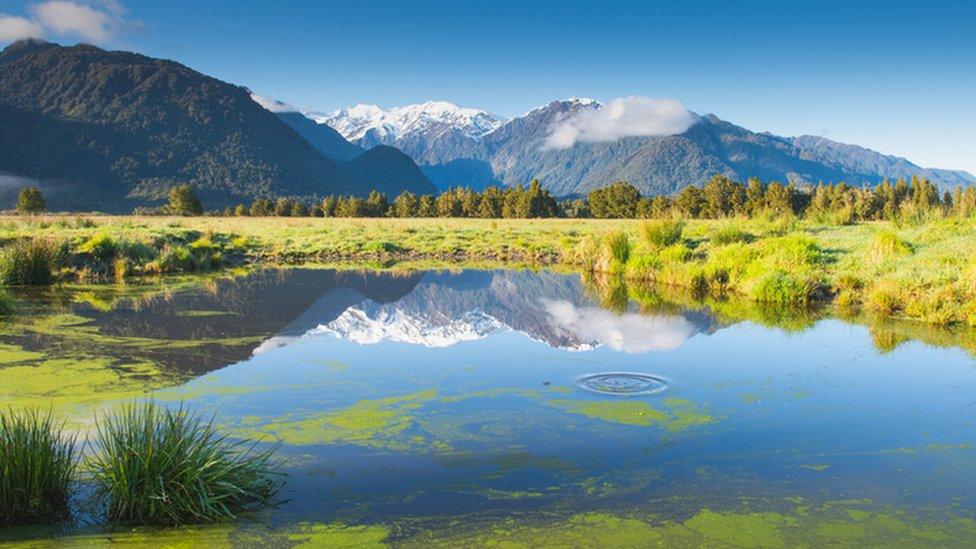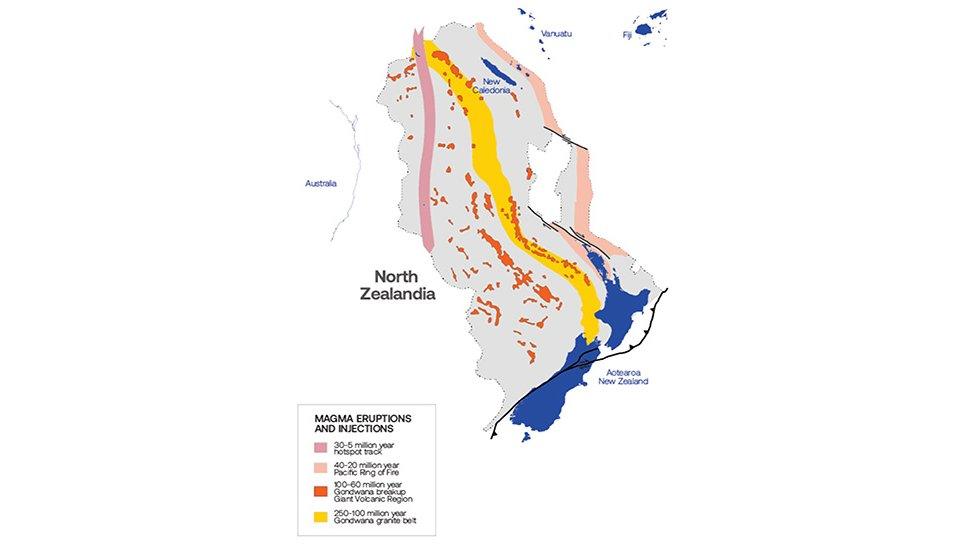Zealandia: Why there's a 'missing' eighth continent
- Published
- comments

Scientists think the discovery can teach us more about how countries like New Zealand (pictured here) were formed
Geologists have now mapped out the missing eighth continent.
You might be used to learning about seven continents around the world, but did you know that Zealandia is the long-lost eighth?
It was undiscovered for a long time because it's mainly underwater.
In 2017, scientists were proven correct about their suspicions of an eighth continent, when they found evidence for a big underwater mass of land linked to New Zealand.
New maps have taught us more about how this continent was formed - but have you ever wondered why we have continents, and where they all came from?
What is Zealandia?

This geological map shows where Zealandia is. Can you spot New Zealand on it in blue?
It's a continent that's mainly underwater. Scientists had been theorising about it for a long time, and confirmed its existence six years ago.
It can be found south-east of Australia, in the Pacific Ocean.
The continent has been geologically mapped, which was a lot harder than it might sound, because 95% of it is underwater.
Maps show where land and sea is, and where places are in relation to each other.
Geological maps show an area based on what type of rock is found there.
They can teach us about how areas of land have formed, or where they have broken off from.
If you look at geological maps of Europe, you can see areas that used to be attached to each other, because they have the same type of main rock.
Pangea

This is what Pangea might have looked like millions of years ago as one big landmass
In your geography lessons you made have learned about the supercontinent of Pangea.
It existed millions of years ago, when dinosaurs were still around, and there was only one big landmass that was a single continent.
The Earth's surface is made up of large slabs called tectonic plates that fit together like a jigsaw puzzle. Floating above softer rock called a mantle, the slabs move very slowly over time.
Over millions of years, tectonic plates moved and broke Pangea up into the continents we know today, but they're still moving. Tectonic movement causes things like earthquakes and volcanoes.
How did Zealandia form?

As the plates moved, following the arrows on the picture, Zealandia was formed. You can see on the map how Australia and Antarctica formed as well during this plate movement
Scientists think Zealandia formed around 83 million years ago.
Before Pangea, there was another supercontinent called Gondwana. This eventually collided with other big continents to form Pangea. As Gondwana broke up and disintegrated, a small continent was left - this is Zealandia. Other parts of it created Australia and Antarctica.
Research suggests Zealandia was an island for a while, but then vanished under the sea. By looking at the different types of rocks in New Zealand, and analysing how deep the water was around it, scientists came closer to proving their theory.
The geological maps show Zealandia has some similar geology to West Antarctica. It fit together like a jigsaw puzzle - suggesting they used to be attached millions of years ago.
Even though this all happened millions of years ago, Zealandia is considered the youngest continent, because the others, like Africa and Asia, formed before it.
